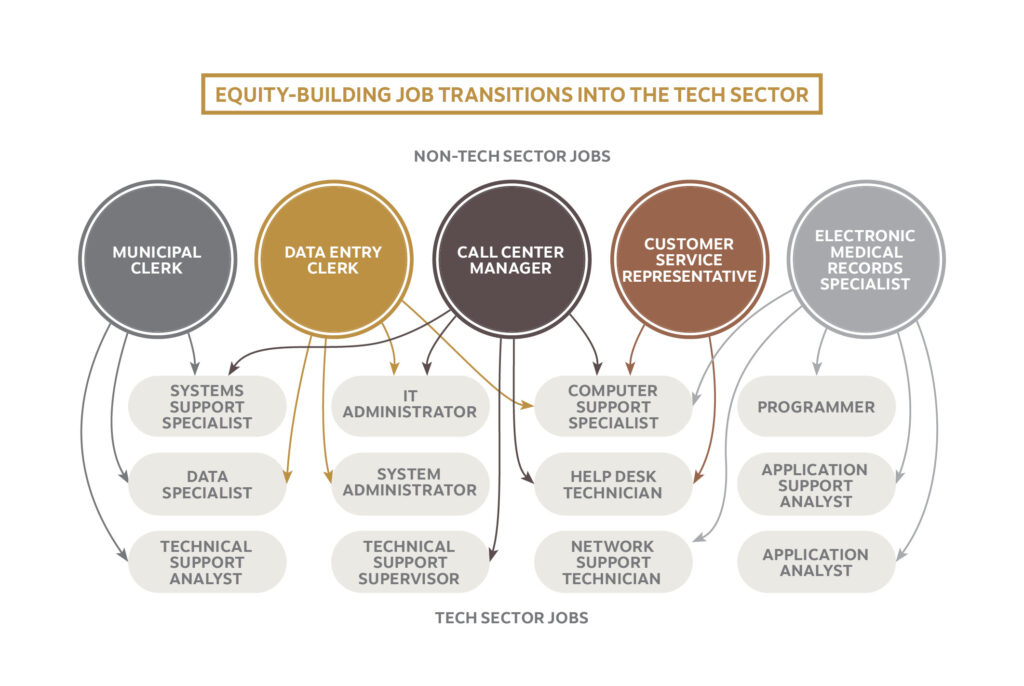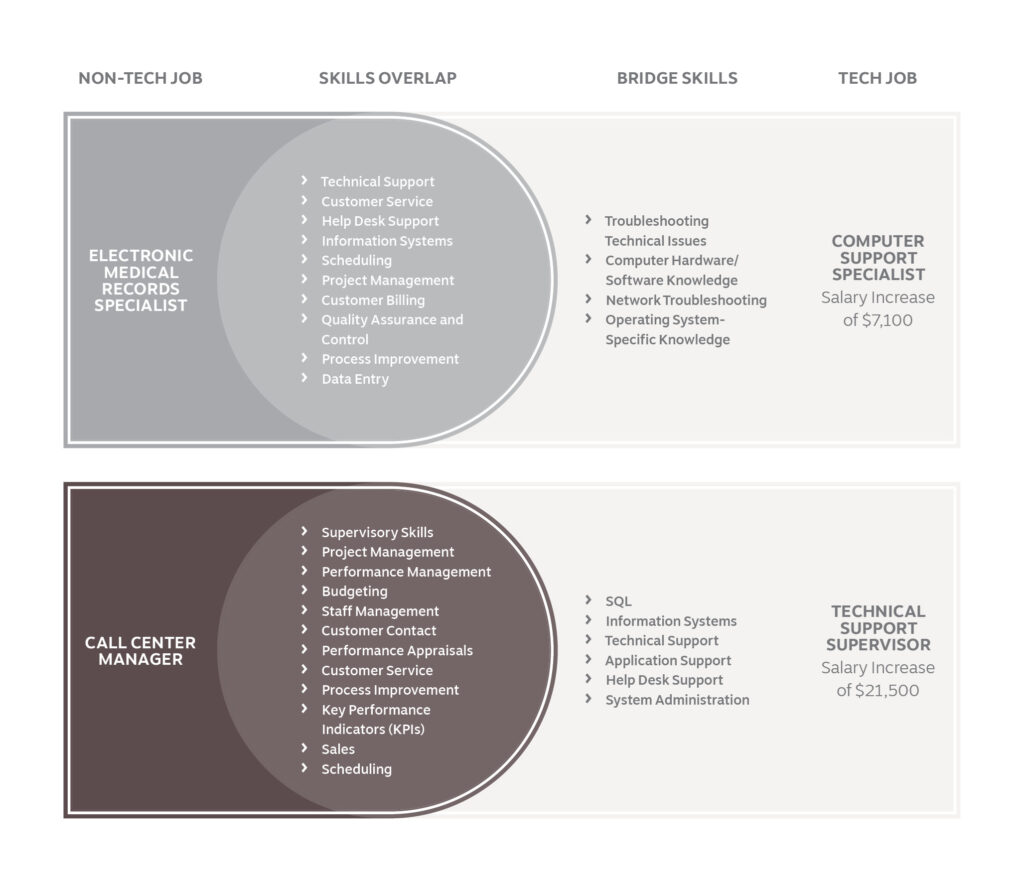A just-released report shows women of color only make up 5% of the tech workforce. And Candice Dixon, coalition development director, Command Shift, wants to see that number double to 10% over the next 10 years.

Command Shift is an initiative of NPower, a nonprofit that provides greater access to the tech sector through credentials training, support services, and career counseling. Dixon explains, “Command Shift is a glass ceiling-breaking coalition of corporate, nonprofit, and community leaders committed to accelerating more women of color in technology.”
“What we are focused on doing is ensuring that we are pipelining more women of color into the tech industry and in particular, women of color who are pursuing tech through nontraditional pathways and are from under-resourced communities.”
Achieving Equity Today
The report The Equation for Equality from Emsi Burning Glass finds that a skills-based approached can create opportunity for women who have non-tech jobs that use knowledge and skills which are also utilized in tech. “The talent pool becomes larger and more diverse when job matches focus on the skills required for the job,” says the report.

“When we talk about the 250,000 women who are missing from tech, we’re talking about the number of women that it would take to get us to equity – today. If we want the current tech sector to match the skills-similar workforce, which right now has 10% women of color who are available to transition into tech roles, we would need to put about 250,000 more women of color into the tech workforce today,” says Dixon.
“There are as many as 2.5 million women of color who are in non-tech roles, but have skills similar to tech,” notes Dixon.
The report says, “All that is needed to facilitate transitions into technology jobs from skills-similar occupations is additional training in the bridge skills and last-mile skills that define the role they would be entering.”
One example in the report indicates a call center manager can transition to a technical support supervisor.

With some additional training, that call center manager might see a salary boost of $21,500 when she starts working as a technical support supervisor.

Growing and Advancing the Talent Pool
Dixon says training program expansion and company recruitment and hiring practices must be revamped to grow the number of women of color working in tech. “What we’re here to tell them through this report is that pedigree needs to be put to the side and we need to be focused on potential. And the potential is in the skills.”

Getting that first job is just one part of the process. Dixon says, “It’s going to require that companies double down on committing to not only helping women of color enter tech, but putting them into positions of influence and power.”
“We won’t see the changes that need to take place within the tech industry, unless we see more women and especially women of color as the decision makers, who can help set the tone around company culture, who can help shift different policies that are taking place within the company, so that women of color want to stay.”
Rooted in Community
Dixon points out that NPower has programming in California, Maryland, Michigan, Missouri, New Jersey, New York, and Texas. Trainees participate in 23 weeks of tech training and are then connected to seven-week paid internships with corporate partners.
NPower serves about 1,300 people each year as part of the organization’s fundamentals program – with an additional 250-300 others seeking specialized certifications in areas like cybersecurity and cloud computing.
Dixon adds, “We realize for our trainees to be successful we can’t just offer the training. We need to make sure there are wraparound supports available. We have a mentorship program. We have social support so that we can make sure that the people in our program and especially the women have access to the transportation that’s needed to get to our programs and things of that nature.”
Upon completion of the program, Dixon says, “We have placement managers at all of our sites who are responsible for identifying job placement opportunities for everyone within the NPower program. We place about 80% of people who finish our program.”











